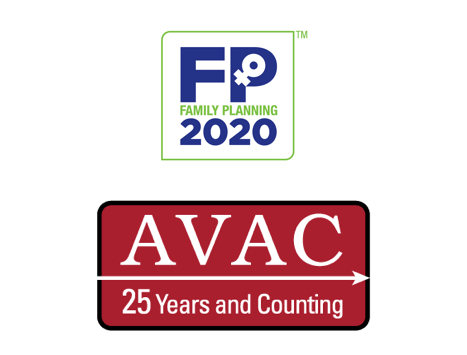Now is the time to reaffirm our commitment to supporting integrated family planning, HIV/STI, and cervical cancer services—all of which are essential to more comprehensive SRH service provision—that are grounded in rights-based principles and responsive to the needs of all clients, regardless of age, HIV status, marital status, or parity.
Imagining a 'New Normal'
The COVID-19 pandemic is forcing the global health community to imagine a "new normal." As health systems are retooled to become more resilient and flexible to withstand the pressures of an outbreak, there is an opportunity to help define the "new normal"—one that guarantees health services that are comprehensive, rights-based, and client-centered. Quick and sustained action is needed on several fronts, in partnership with governments and policy makers, civil society and advocates, and donor agencies, to make this new normal a reality.
First, the global health community should continue its commitment to ensuring quality, rights-based, client-centered, integrated SRH care to include, at minimum: (1) A full range of available contraceptive methods; (2) HIV/STI prevention, testing, and treatment; and (3) cervical cancer prevention, screening, and treatment services.
Self-care interventions and differentiated service delivery (DSD) can increase choice and informed decision-making, while reducing burdens on the health system; and also offer an opportunity to invest in a broader rights-based, client-centered approach in the long term, including but not limited to:
a. Contraception: Promote community-based distribution of and over the counter access (if available) to oral contraceptive pills, emergency contraception (EC), and DMPA-SC (subcutaneous), as well as male (external) and female (internal) condoms for dual protection.
b. HIV prevention: Promote multi-month dispensing of oral pre-exposure prophylaxis (PrEP) to ensure better access to HIV prevention drugs; and continue providing post-exposure (PEP) prophylaxis.
c. HIV/STI testing and treatment: Support self-collection of samples for STI testing, including HIV self-testing and HPV self-sampling for cervical cancer prevention and management. Prioritize differentiated antiretroviral (ARV) therapy delivery for people living with HIV, such as multi-month dispensing of ARVs and STI treatment, to increase efficiency and respond to client needs.
d. Cervical cancer prevention: Promote access to two doses of the HPV vaccine, ideally by 15 years of age.
e. Digital and virtual services: Strengthen clients' access to virtual or telehealth options through a wide variety of technological platforms, while maintaining clients' privacy and confidentiality.
f. Mobilization of and support to community health workers (CHWs): Through task-shifting approaches, CHWs can provide accurate information and services (e.g., PrEP, PEP, contraception, and other health commodities (such as antibiotics to treat STIs)) at their homes or community meeting points for ease of access.
Private non-governmental organizations (NGOs) and implementing partners that provide health services and programming should continue ensuring access to integrated SRH care, in partnership with government entities.
Second, governments and policy makers should ensure COVID-19 and other national SRH policies and guidance reflect essential service provision. Such services should remain accessible and affordable for all sexually active individuals, including adolescents, during and post COVID-19.
Third, donor agencies should reduce funding barriers to ensure resources are allocated as efficiently as possible and in line with the needs and preferences of women and girls. COVID-19 support should be designed and managed across SRH services, particularly HIV and family planning, in order to break down siloed funding streams that can prevent efficient, comprehensive SRH service provision. Donor agencies should support health systems strengthening efforts to bolster their resiliency in the face of emergencies and be fully responsive to what clients want.
Fourth, civil society and advocates should continue efforts to maintain, and ideally expand, the availability of SRH services, including demanding investments in SRH programs, procurement of critical health commodities, metrics that reflect new models of service delivery (e.g. DSD), and provider training and program designs that reflect a client-centered, informed-choice approach. As COVID-19 increases challenges in reaching communities with information on comprehensive SRH, civil society and advocates will need to use new approaches and build on partnerships to have representatives at the table, including and especially youth networks, and to track progress on government and donor commitments.
The global health community should use this opportunity to address what we know about gender and socio-economic inequalities: Women and girls are at the greatest risk of being negatively impacted by COVID-19 both in the short and long term; we are already witnessing tangible effects on SRH outcomes due to COVID-19. The need for SRH services does not stop during an emergency response. In fact, they are more crucial than ever. Governments, donors, advocates, and implementing partners should prioritize greater collaboration to achieve our imagined 'new normal' to provide comprehensive SRH care to women and girls around the world.
Who We Are
The Integration Community of Practice (COP) is a working group of family planning, HIV/STI, and cervical cancer programmatic and technical experts, advocates, and policymakers based across the globe and convened by FP2020 and AVAC to respond to the need for greater and more direct collaboration across the sexual and reproductive health community.
For a full list of members see below:
Advocacy for Quality Health Uganda (AQH-Uganda)
AVAC
Botswana Sexual and Reproductive Health Research Initiative
Clinton Health Access Initiative (CHAI)
EngenderHealth
FP2020
International AIDS Society (IAS)
International Community of Women Living with HIV Eastern Africa (ICWEA)
International Planned Parenthood Federation (IPPF)
Jhpiego
Johns Hopkins Center for Communication Programs (JHU CCP)
Marie Stopes International (MSI)
Population Council
Population Services International (PSI)
TogetHER for Health
U.S. Agency for International Development (USAID)

